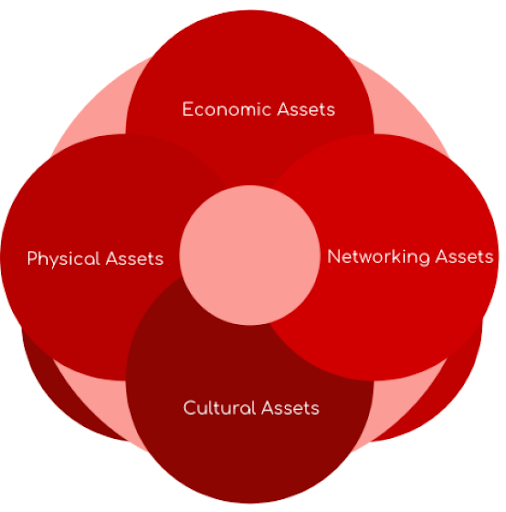Productive Ecosystems and Innovation Districts: Key Drivers for Sustainable Smart Cities


· 5 min read
Smart cities are becoming more and more prevalent around the world, driven by rapid urbanization and the need to create more sustainable and efficient urban environments. Industry 4.0, with its emphasis on digital technologies, automation, and the Internet of Things (IoT), is playing a significant role in this transformation. One of the key strategies for building sustainable smart cities is the development of productive ecosystems and innovation districts.
Productive ecosystems are a new way of thinking about urban development that places a strong emphasis on economic and environmental sustainability. The concept is based on the idea that urban environments should be designed as integrated systems that incorporate multiple sectors and functions, including manufacturing, agriculture, energy production, waste management, and transportation.
In a productive ecosystem, these different sectors are interconnected and work together to create a more sustainable and efficient urban environment. For example, waste from manufacturing processes can be used to produce energy, which can then be used to power the manufacturing facility. By incorporating circular economy principles, productive ecosystems can create value from waste and reduce the need for external inputs.
Innovation districts are a specific type of urban development that focuses on creating a concentrated cluster of innovation and entrepreneurial activity. These districts are designed to bring together companies, universities, research institutions, and other organizations in a specific geographic area to foster collaboration and knowledge sharing. The goal is to create a fertile environment for innovation and entrepreneurship, which can lead to economic growth and job creation.
Innovation districts often include a mix of commercial, residential, and institutional uses, as well as public spaces and transportation infrastructure. They are designed to be walkable, bikeable, and accessible by public transportation, which helps to reduce the carbon footprint of the district.
Productive ecosystems and innovation districts are both important components of sustainable smart cities. By creating integrated systems that incorporate multiple sectors and functions, productive ecosystems can help to reduce waste, increase energy efficiency, and create new economic opportunities. Innovation districts, on the other hand, can help to foster innovation and entrepreneurship, which can lead to economic growth and job creation.
Together, these two concepts can help to create a more sustainable and efficient urban environment. For example, a productive ecosystem could include a manufacturing facility that uses waste to produce energy, which could then be sold to other companies in an innovation district. This would create a closed-loop system that generates economic value and reduces the carbon footprint of the district.
Productive ecosystems and innovation districts can also play a key role in addressing social and environmental challenges. For example, a productive ecosystem could include an urban farm that provides fresh produce to local residents and reduces the need for transportation of food from outside the city. An innovation district could focus on developing new technologies to address climate change or provide affordable housing solutions.
An innovation ecosystem is a complex and interconnected system of actors, resources, and conditions that support and encourage the development and commercialization of new ideas, technologies, and business models. It is composed of various components such as companies, universities, research institutions, government agencies, investors, and other stakeholders, that work together to create an environment that is conducive to innovation.

There are several examples of productive ecosystems and innovation districts in action around the world. One of the most well-known is the Masdar City project in Abu Dhabi. This project is focused on creating a carbon-neutral urban environment that incorporates a range of sustainable technologies and design principles, including renewable energy, water conservation, and waste management. The project includes a mix of residential, commercial, and institutional uses, as well as a research and development hub focused on clean energy.
Another example is the Brooklyn Navy Yard in New York City. This former naval shipyard has been transformed into a productive ecosystem that includes a range of manufacturing and technology companies, as well as an on-site power plant that uses waste to produce energy. The site also includes a range of sustainable design features, such as a green roof and stormwater management system.
In Singapore, the Jurong Innovation District is a 600-hectare development focused on advanced manufacturing and engineering. The district includes a range of research institutions, educational facilities, and businesses, as well as a sustainable energy system that uses solar power and waste-to-energy technologies.
In the Netherlands, the Strijp-S district in Eindhoven has been transformed from a former Philips electronics plant into a vibrant mixed-use district that includes housing, commercial space, and a range of creative and technology companies. The district has a strong focus on sustainability, with features such as green roofs, sustainable transportation options, and on-site energy production.
Productive ecosystems and innovation districts can provide a range of benefits for cities and their residents. Some of the key benefits include:
Productive ecosystems and innovation districts are emerging as important strategies for building sustainable smart cities. By creating integrated systems that incorporate multiple sectors and functions, and by fostering innovation and entrepreneurship, these concepts can help to create more efficient, sustainable, and livable urban environments. As cities around the world continue to grapple with rapid urbanization and the need to reduce their carbon footprint, productive ecosystems and innovation districts will play an increasingly important role in shaping the cities of the future.
Future Thought Leaders is a democratic space presenting the thoughts and opinions of rising Sustainability & Energy writers, their opinions do not necessarily represent those of illuminem.
illuminem briefings

Energy Transition · Sustainable Investment
illuminem briefings

Climate Change · Insurance
Glen Jordan

Sustainable Lifestyle · Sustainable Living
World Cement

Circularity · Architecture
The Guardian

Climate Change · Architecture
Interesting Engineering

Biomass · Architecture